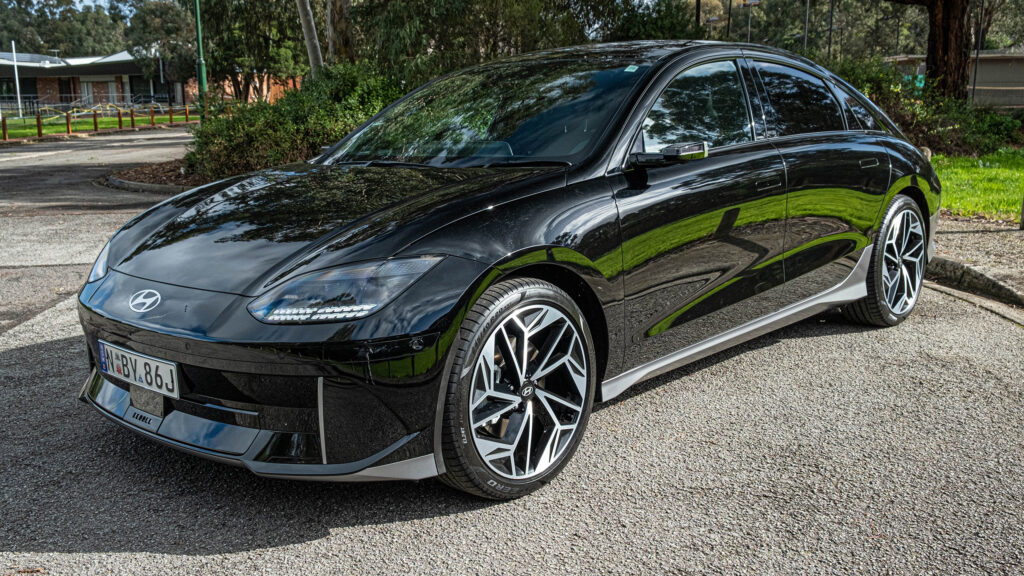The 2023 Hyundai Ioniq 6 is a superb sedan but is it good enough to pull buyers away from the Tesla Model 3?
2 hours ago
The Hyundai Ioniq 5 was a revelation when it hit the market a couple of years ago, perfectly combining a retro yet futuristic design with clever packaging, neat technologies, and plenty of performance.
Fast forward to 2023 and it now has a sibling in the form of the Ioniq 6 and we recently lived with one for a week to see if it’s as good as the SUV and just where it places in the current EV hierarchy.
The design
Much has been said about the Ioniq 6 since it was first unveiled and just like the Ioniq 5, most of this talk has been about the exterior design. Hyundai itself refers to the vehicle as a ‘streamliner’ and this is obvious in its sleek design that aims to minimize its coefficient of drag which sits at just 0.21, making it one of the most aerodynamically efficient vehicles on sale today.
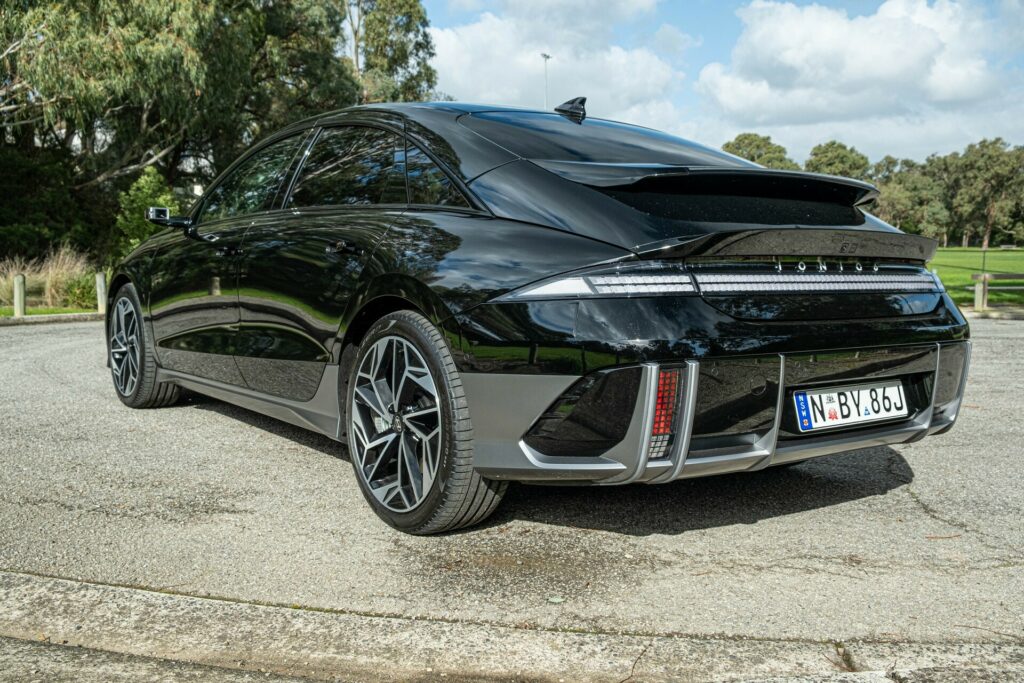
Photos of the Ioniq 6 don’t really do the design justice. Like the Ioniq 5, it is quite an eyeful when you first see it but as you look closer, you’ll begin to notice and appreciate the flowing lines. It’s surprisingly big in person, measuring 4,855 mm (191 inches) long, making it quite a bit longer than the Ioniq 5 which is 4,635 mm (182.4 inches) and the Tesla Model 3 that is 4,694 mm (184 inches). It looks even longer in person than those figures suggest, perhaps because of the low shoulder line that stretches from the headlights, below the curved side windows, and ends at the corner of the tailgate.
Speaking of the tailgate, there’s no doubt that the most striking element of the Ioniq 6’s design is the rear fascia. Immediately catching the eye is the full-width LED light bar consisting of dozens of square LEDs that continue Hyundai’s ‘Pixel’ theme first introduced with the Ioniq 5. There is then a second light bar incorporated within the spoiler stretching out from the rear window, although this one is only triggered when you hit the brakes.
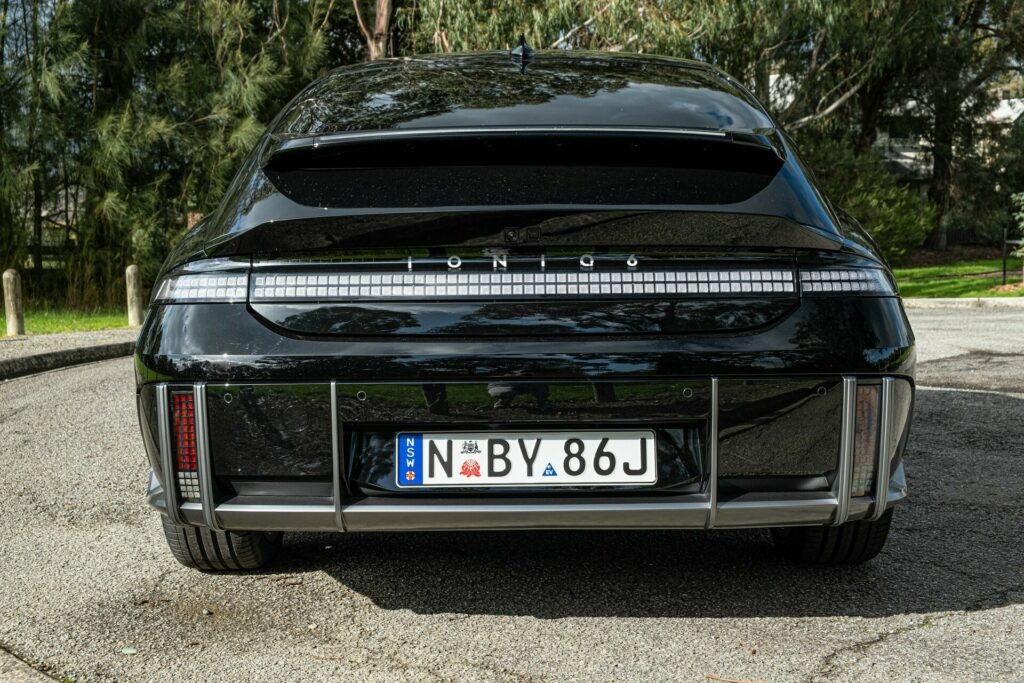
Different strokes for different folks
In Australia, three versions of the Ioniq 6 are available: the entry-level Dynamiq, the mid-range Techniq, and the flagship Epiq, which we drove. All three are powered by the same liquid-cooled 77.4 kWh lithium-ion battery pack but the Dynamiq makes do with a single electric motor driving the rear axles with 168 kW (225 hp) and 350 Nm (258 lb-ft) of torque. By comparison, the Techniq and Epiq both have the same motor at the rear axle but also a 74 kW (99 hp) and 255 Nm (188 lb-ft) motor at the front axle, making for a combined 239 kW (320 hp) and 605 Nm (446 lb-ft).
Those seeking an electric Hyundai with the best possible range would be wise to opt for the Ioniq 6 Dynamiq as it can travel a claimed 614 km (381 miles) on a single charge whereas both the Techniq and Epiq are rated at 519 km (322 miles). It takes just 18 minutes to charge from 10-80% at a DC charger that supports rates of up to 350 kW.
A handful of key elements distinguish the Ioniq 6 Epiq from the dual-motor Techniq. For example, it comes standard with a battery conditioning system to heat the battery in cold conditions for improved DC charging and performance. It also has a heat pump and perhaps the most significant change of them all, digital side mirrors in place of traditional mirrors. Local pricing starts at AU$74,000 ($48,323) for the Dynamiq and increases to AU$83,500 ($54,527) for the Techniq and AU$88,000 ($57,465) for the Epiq, all before on-road fees.
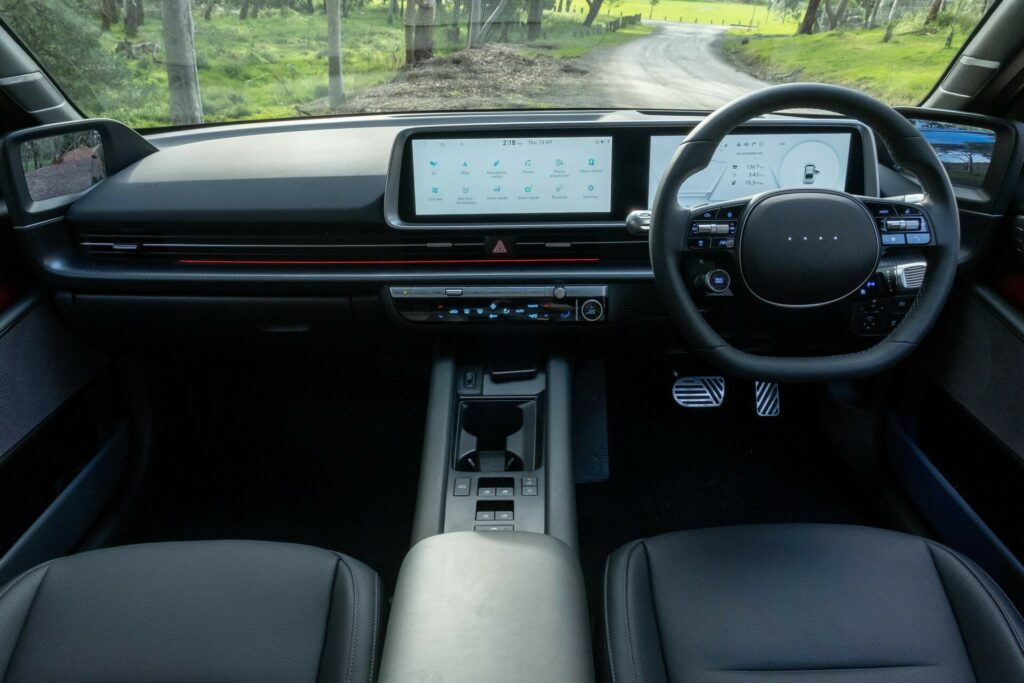
It’s worth noting that shoppers won’t need to splurge on the flagship model if they want all of Hyundai’s latest driving assistance systems, security features, interior technologies, nor the thumping 8-speaker Bose audio system. Indeed, the Dynamiq is almost identically equipped to the Epiq with Hyundai’s complete SmartSense system with blind-sport collision-avoidance assist, a blind-spot view monitor, driver attention warning, forward collision-avoidance assist, lane following assist, rear cross-traffic collision-avoidance assist, rear occupant alert, smart cruise control, and more.
A luxurious cacoon
The cabin of the Ioniq 6 is equally as striking as the exterior. Hyundai refers to the interior as “cocoon-like” and it’s easy to see why with the impressively-low seating position and the pronounced center spine running through the front half of the cabin. The car manufacturer made a bold design statement with the sliding center console and flat floor up front of the Ioniq 5 and while we would have liked the Ioniq 6 to have a similar design, it remains a lovely place to spend time.
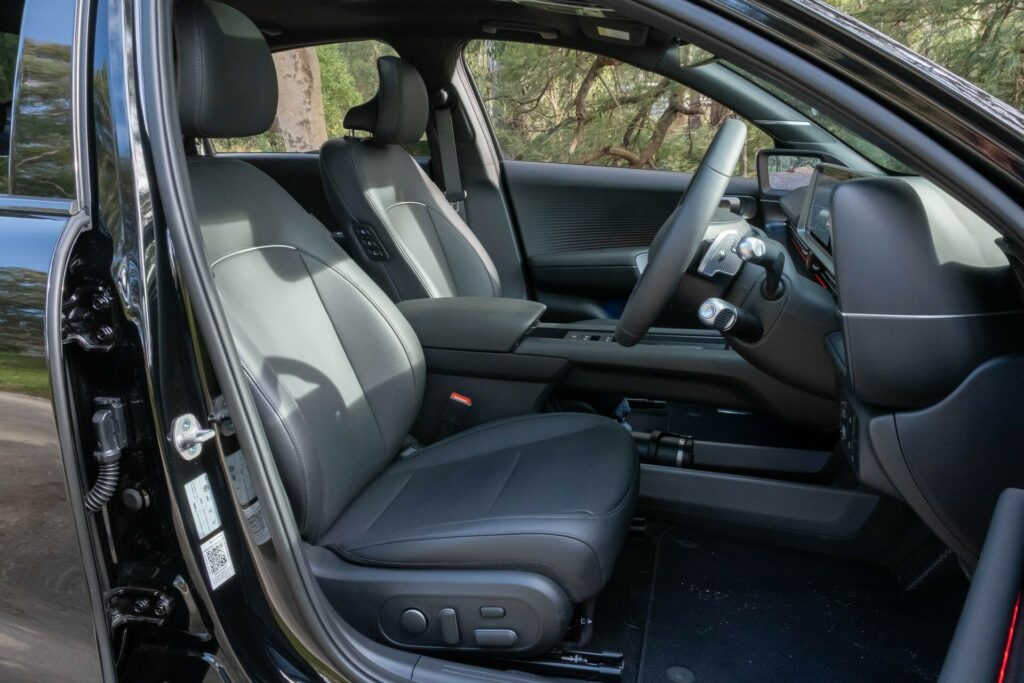
Located directly in front of the minimalist steering wheel is a 12.3-inch digital instrument cluster while next to it is a 12.3-inch infotainment display. We must applaud Hyundai for finding the perfect mix of physical buttons and switches with touch displays in the Ioniq 6. On the steering wheel, for example, there are physical buttons and there are also prominent buttons on the dashboard that serve as infotainment and HVAC shortcuts. Fine adjustments to the temperature are then operated through a capacitive touchscreen. The central spine also houses the window switches.
Driven: 2023 Genesis GV60 Performance AWD Will Silence The Naysayers
As our test car was the Ioniq 6 Epiq, it also had digital mirrors, meaning there are an additional two screens in the cabin. As we found on the Genesis GV60 late last year, these digital mirrors require a small learning curve but are easy and intuitive to use once you get the hang of it. However, we wish Hyundai sold them as an option and not as standard equipment on the Ioniq 6 as we still prefer traditional mirrors.
The door panels of the Ioniq 6 are particularly intriguing and made from corrugated plastic, unlike any car we’ve seen before. There are also plenty of recycled materials found within, including carpets made from recycled fishing nets and seats made from recycled eco-leather. Interior space is excellent, hardly a surprise given that the Ioniq 6 is based on the Hyundai Motor Group’s superb E-GMP platform and has a 2,950 mm (116-inch) wheelbase. This is especially evident in the second row where there is an abundance of knee room. Unfortunately, the sleek shape and low roof mean that headroom is limited. If you’re tall and sitting in the rear, your head will touch the ceiling, but the Tesla Model 3 with its glass roof is no different. A powerful, 250-volt power outlet is found under the second row.

Poise for days
We loved the Ioniq 5 when we first drove it back in late 2021 and the Ioniq 6 feels noticeably more polished and better suited to Australian roads. This is most evident with the suspension.
No doubt helped by the fact that it sits slightly lower but also due to far superior suspension tuning, the Ioniq 6 Epiq feels much more hunkered down to the road. Wheel and body control are far improved, making the Ioniq 6 much more enjoyable to drive at any speed. In the Ioniq 5, it had a very floaty feeling but there’s none of that in its sedan sibling. Hyundai Australia has updated the Ioniq 5’s suspension tune for the 2023 model year but we’ve yet to experience it for ourselves.
The next most impressive thing about the Ioniq 6 is its energy efficiency. Hyundai has given the car an energy consumption figure of 16.9 kWh/100 km over the combined cycle and that’s right on the mark. Drive it conservatively and it’s possible to dip into the 15s during urban driving, a very solid figure for what is the high-performance version.
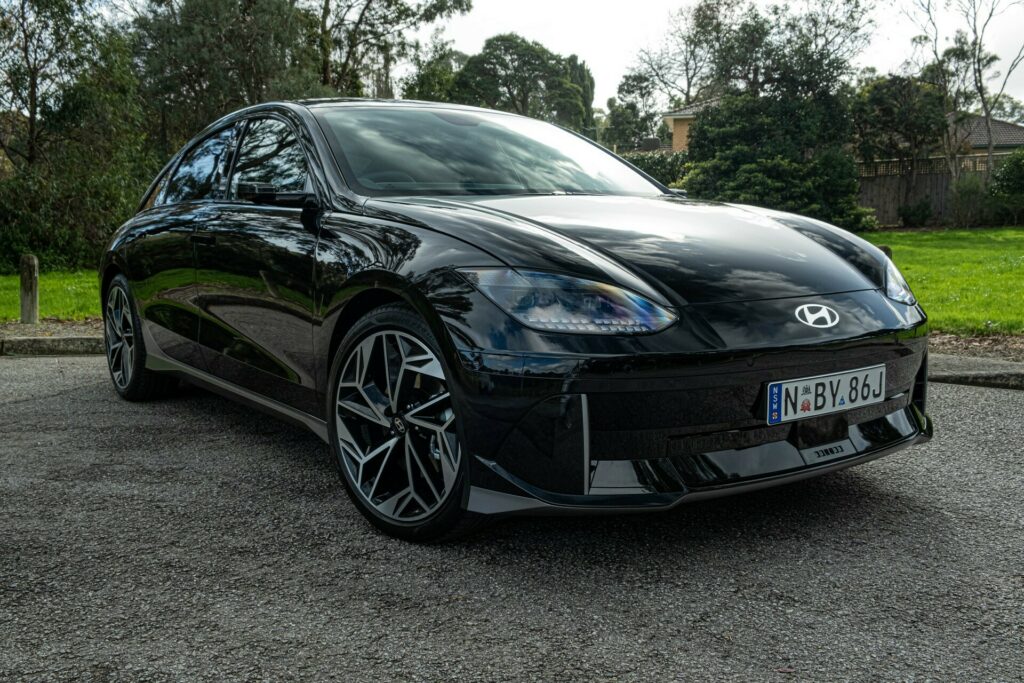
Like other Hyundai, Kia, and Genesis EVs, steering wheel-mounted paddle shifters are used to control the regenerative brakes. The system works seamlessly and we rarely had to use the mechanical brakes at all during our time with the car, instead choosing to drive it almost exclusively in ‘i-Pedal’ mode. All of the controls are nicely weighted and should you want to start pushing the car a little bit, it rarely feels out of sorts, delivering smooth and predictable handling and excellent traction from the 245/40 Pirelli P Zero tires.
Read: Hyundai Ioniq 6 Buyers To Get 2 Years Of Free Electrify America Charging
The duality of the Ioniq 6 Epiq is also noteworthy. Not only does it feel poised when pushed but it is supremely comfortable on long journeys. The seats provide excellent support and as with some other Hyundai models, the driving position is great.
The Hyundai Ioniq 6 was recently named World Car of the Year, World Electric Vehicle, and World Car Design of the Year and it’s not hard to see why. It is perhaps the most well-rounded electric sedan currently on sale and feels noticeably more premium than the Tesla Model 3. However, we remain unconvinced that all that many Aussies will be willing to splurge a minimum of AU$74,000 ($48,323) on the Ioniq 6 when the entry-level Model 3 starts at AU$59,200 ($38,893).
